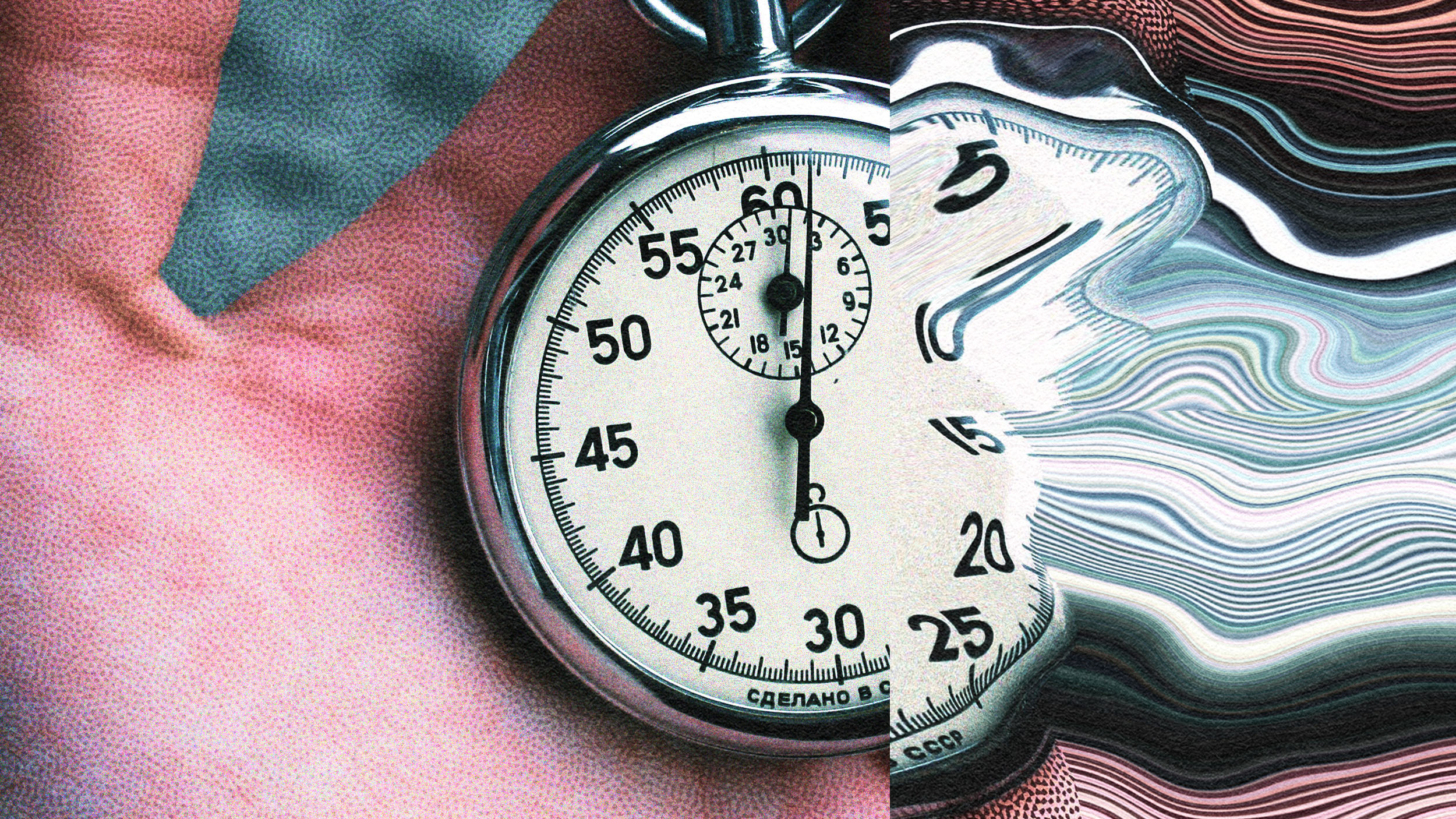- Recent memories run in our brains like sped-up old movies.
- In childhood, we capture images in our memory much more quickly.
- The complexities of grownup neural pathways are no match for the direct routes of young brains.
Mechanical engineer Adrian Bejan of Duke University has an interesting theory regarding the strange phenomenon by which time seems to speed up as we age. It’s not the only theory, mind you, but an interesting one. In his just-published paper, “Why the Days Seem Shorter as We Get Older,” he links the phenomenon to the idea that visual images and the manner in which we process them are the language in which we store and retrieve memories.
Considering it an issue of physics, he suggests that we more rapidly capture and remember visual data when we’re young and that this sets our personal “mind time” playback rate. Since it takes longer to capture images and memory when we’re older, for a number of reasons, the same length of clock time results in fewer images. When we play our back memories at our habitual mind-time rate, they seem sped up to us, much like how old movies appear (the reason why they appear so will be explained shortly). Hence, the clock time they encompass seems to have gone by faster than older memories.
“The human mind senses time changing when the perceived images change. Days seemed to last longer in your youth because the young mind receives more images during one day than the same mind in old age.“

In this excerpt from Peter Jackson’s WWI movie “They Shall Not Grow Old,” the playback speed changes from 24 fps to the original 16 fps at the same moment the black-and-white contrast is corrected, and everyone is revealed to be moving at a normal speed. Image source: Imperial War Museums
Old movies
To understand Bejan’s concept, it helps to understand the old-movie phenomenon. Obviously, the sense of motion in films is produced by rapidly flashing a sequence of changing images before our eyes that causes our brains to see a cohesive moving event. In the early days of cinema, movie cameras captured images at 16 frames per second.
Since The Jazz Singer in 1927 — in order to accommodate sound — we’ve filmed and played back movies at 24 frames per second. This means that when we play a second of an old 16 fps film, it goes by in just two-thirds of a second, making it seems like everyone in those days moved more quickly than we do now, or that their time was sped-up. This is the essential conceit behind Bejan’s hypothesis.
(Bejan/Big Think)
Stretchy time
According to Bejan’s paper, “Time represents perceived changes in stimuli (observed facts), such as visual images. The human mind perceives reality (nature, physics) through images that occur as visual inputs reach the cortex.”
Clock time is mutually agreed-upon and measurable: All clocks agree on its passage, barring mechanical irregularities. Mind time is more subjective, though, and, “The time that you perceive is not the same as the time perceived by another.” Bejan says this is caused by the way we interpret time looking back on memories recent and distant. Our playback rate is constant but fewer images are recorded in memory by older people, producing the old-movie effect.
(Bejan)
Processing memory images more slowly as we age
The paper notes that the average adult makes three to five rapid eye movements — or “saccades” — each second, resting in intervals of 200–300 milliseconds in-between. These rest stops are called “fixations.” If fixations go on for too long, the visual image blurs, its perception fades away in about 10 seconds, and it’s thus less likely to be captured in memory. Because of this, and because one can rarely take in the entire field of vision without moving one’s eyes, saccade reaction time is critical to gathering images to store in memory.
In infants, the fixation periods are shorter, and thus the saccades more frequent, allowing the discernment and capture of more images.
As for older people, Bejan cites a study that found “peak [saccade] velocities were significantly reduced in the elderly.” In the study, the entire visual system lagged, and “saccadic accuracy was significantly decreased.” There are a couple of reasons for this. First, the more complicated neural pathways that have evolved over the course of a lifetime slow down the trip from the eyes to the cortex — children’s pathways are still fairly simple, making the journey much more direct and thus shorter. Second, fatigue — used here as a broad term encompassing “impairment, or loss, of efficiency and skill” — lengthens the fixations so they don’t stick and reduces the frequency of saccades.
Why do you think time speeds up?
In addition to Bejan’s hypothesis, one can also think of other possible reasons that time speeds up in adults as they age:
- A change from the flitting-from-object-to-object attention of childhood to the more concentrated attention required for adult tasks produces fewer visually distinct images worthy of capture.
- Adult responsibilities keep adults busier, and thus the days, weeks, and months fly by more quickly. All of us can remember being bored as children, a sensation that for most of us is a thing of the past.
- A heightening awareness of brevity of life.
It would be interesting to learn if people in retirement continue to experience the speeding up of time.






